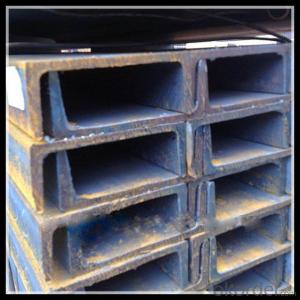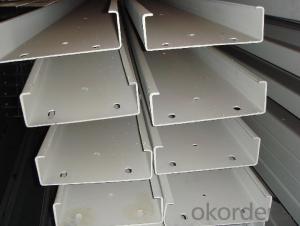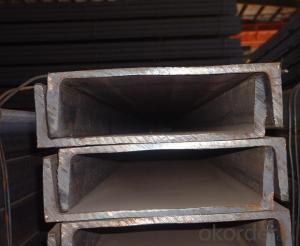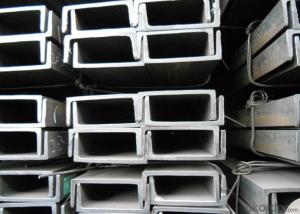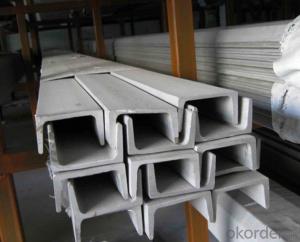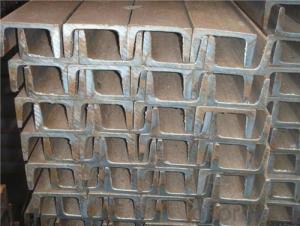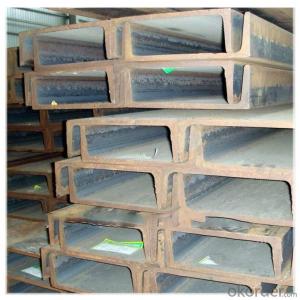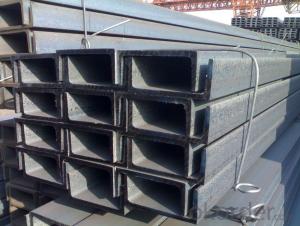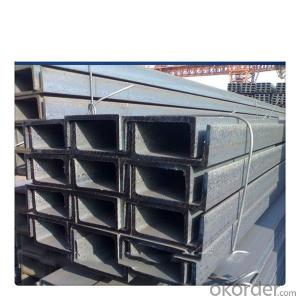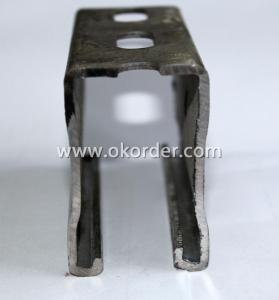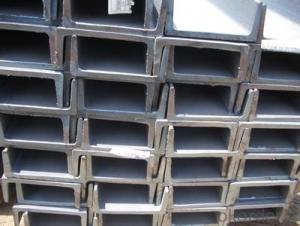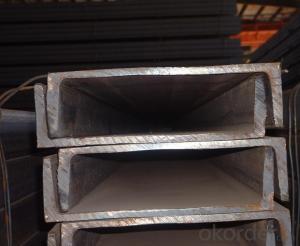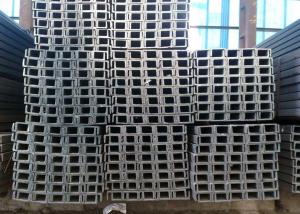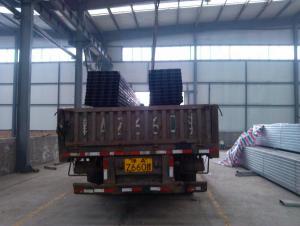Height 87mm the Thickness 8mm Surface and Length: according to the requirements of Channel Steel
- Loading Port:
- Qingdao
- Payment Terms:
- TT OR LC
- Min Order Qty:
- 10 m.t.
- Supply Capability:
- 30000 m.t./month
OKorder Service Pledge
OKorder Financial Service
You Might Also Like
Height 87mm the Thickness 8mm Surface and Length: according to the requirements of Channel Steel
U Channel Steel the Length Thickness According to the Customer
1、the details information of our Channel Steel
1)the ordinary model
Height: | 90-400mm |
Thickness: | 9-14.5mm |
Surface: | according to the customers’ requirements |
Length: | As customers’ requirements |
Size: | 90*37*4.5mm--400*104*14.5 mm . |
Punch: | Can be punched as customer's drawing |
Material: | Q195/Q235/ Q215/Q345/SS400/S235JR, A36,SS400,SS540 ASTM A36 and so on |
2)the light model
Height: | 90-400mm |
Thickness: | 6.4-8.0mm |
Surface: | Painted or Galvanized;according to the customers’ requirements |
Length: | As customers’ requirements |
Size: | 50*32*4.4mm--400*115*8.0mm . |
Punch: | Can be punched as customer's drawing |
Material: | Q195/Q235/ Q215/Q345/SS400/S235JR, A36,SS400,SS540 ASTM A36 and so on |
2、the Product Advantage
1) We can design the channel steel according to customers’requirements
2) We can manufacture under complete quality control system---ISO9001&SGS
3) We can installed with instruction of experienced engineers
4) Easy to assemble and dismantle
5) Eco-friendly material: can be used for several times and can be recycled
6) Shorter construction period, longer using time
7) High strength and stiffness, high weight bearing.
3、why choose us ?Product Advantage
1)The channel steel quality is prime quality
2)Our price is competitive price with our competitor
3)We provide the professional service
4)Prompt delivery & Seaworthy packing
5)Mill Test Certificate
Company Information
which is one of the largest manufacturing bases of Steel Channel in northern China. We are a company that is specialized in producing Stainless Steel Channel、Prime Stainless Steel Channels and so on.
With years of development, our company won the trust and excellent reputation of customers for the quality of our products and sincere service, as well as foreign users of the community.
Please contact me if you are interested in our products and I will try my best to offer you the best goods and service.
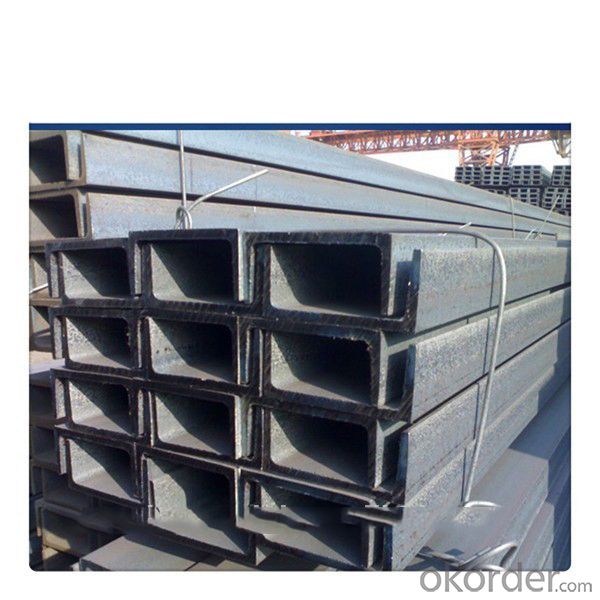
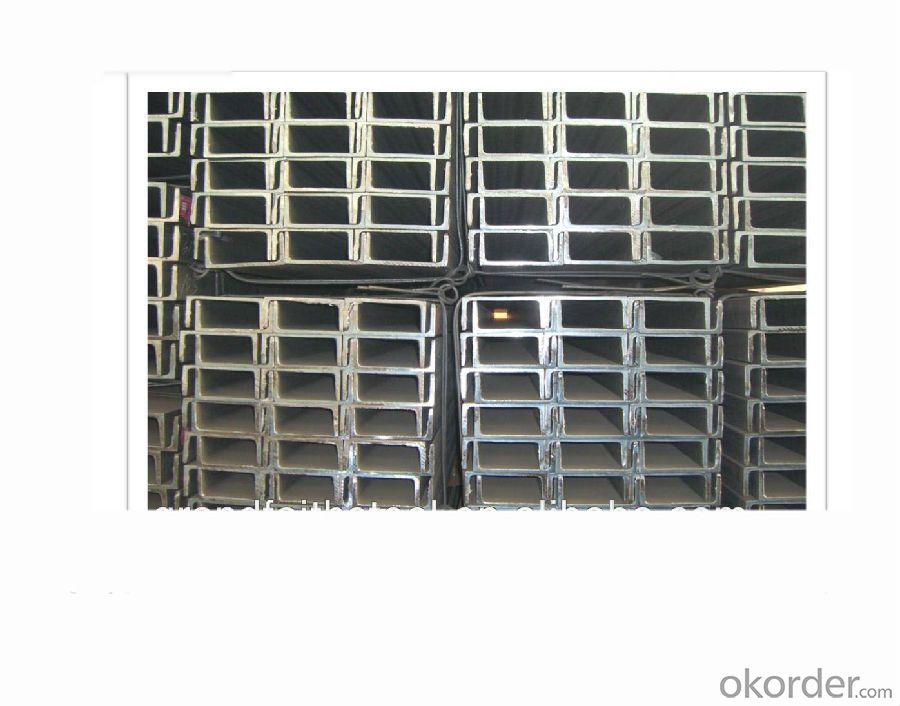
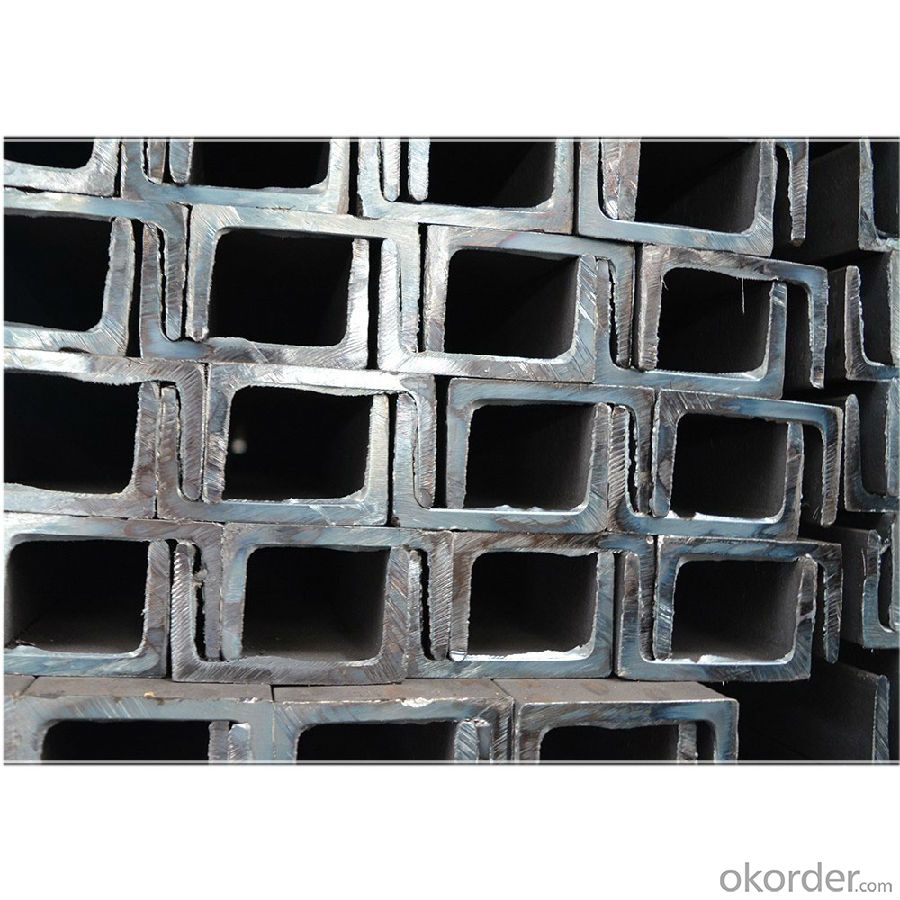
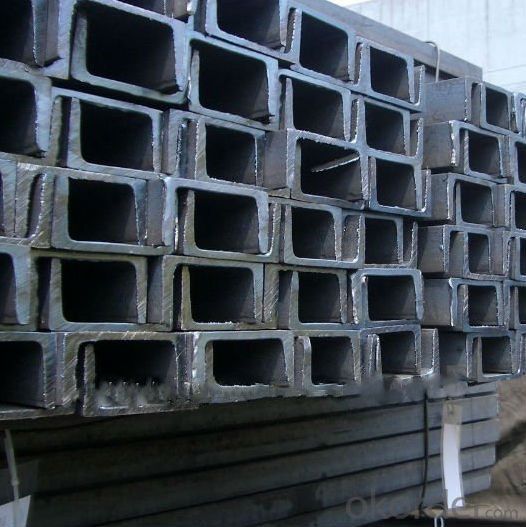
- Q: What angles, angles and channels are used in general? Please try to be specificWhat are the shapes used in construction?
- In the construction, steel can be used for the main stress parts, such as column and beam; steel stairs, generally used for road; angle plays a secondary role such as support, knee brace etc.
- Q: What are the factors that affect the strength of steel channels?
- The factors that affect the strength of steel channels include the alloy composition, heat treatment, dimensions (such as width, height, and thickness), shape, and the presence of any defects or imperfections in the material. Additionally, the manufacturing process, including the quality of the steel and any surface treatments or coatings, can also impact the strength of steel channels.
- Q: Are steel channels prone to rusting?
- Yes, steel channels are prone to rusting if they are not properly protected or coated.
- Q: How do steel channels contribute to the stability of cantilevered structures?
- Steel channels contribute to the stability of cantilevered structures by providing additional support and reinforcement. They are typically used as beams or braces along the length of the cantilever, helping to distribute the load and resist bending and twisting forces. The channels' strength and rigidity enhance the overall structural integrity, preventing excessive deflection and ensuring the stability of the cantilevered structure.
- Q: What is the weight-bearing capacity of steel channels?
- The weight-bearing capacity of steel channels varies depending on their dimensions, thickness, and quality. It can range from a few hundred pounds to several tons, making them suitable for a wide range of structural applications.
- Q: What material does hot-dip galvanized channel belong to?
- Hot galvanizing is to strengthen the raw material corrosion, oxidation and reprocessing process. The material also depends on what material the channel itself is. General Q235 channel steel, galvanized mostly.
- Q: Are steel channels suitable for underground applications?
- Yes, steel channels are suitable for underground applications. They are durable, strong, and resistant to corrosion, making them ideal for withstanding the harsh conditions found underground. Additionally, steel channels can be easily customized to fit specific requirements, making them versatile for various underground applications.
- Q: Can steel channels be used for window framing?
- Yes, steel channels can be used for window framing. Steel channels are strong and durable, making them suitable for supporting the weight of windows. They can also provide added stability and security to window installations. Additionally, steel channels are resistant to corrosion, which is particularly important for window frames exposed to outdoor elements. Overall, using steel channels for window framing can enhance the structural integrity and longevity of windows.
- Q: What are the different types of connections for steel channels in modular office systems?
- There are various types of connections used for steel channels in modular office systems, including bolted connections, welded connections, and adjustable connections. Bolted connections involve using bolts and nuts to secure the channels together, providing flexibility for disassembly and reassembly. Welded connections involve fusing the steel channels together using heat, creating a strong and permanent connection. Adjustable connections allow for fine-tuning and leveling of the channels, ensuring proper alignment and stability in the modular office system.
- Q: What are the different methods of insulation for steel channels?
- There are several methods of insulation for steel channels, each offering unique advantages and applications. Some of the most common methods include: 1. Thermal insulation: This method involves using materials with low thermal conductivity to reduce heat transfer. Common thermal insulation materials for steel channels include mineral wool, fiberglass, foam insulation, and reflective barriers. These materials are effective in preventing heat loss or gain, ensuring energy efficiency and maintaining a comfortable temperature within the channel. 2. Spray foam insulation: This technique involves applying a liquid foam insulation material on the surface of the steel channel. The foam rapidly expands and solidifies, creating a seamless and airtight insulation layer. Spray foam insulation provides excellent thermal and moisture resistance, as well as soundproofing properties. It adheres well to irregular shapes and can easily fill gaps and cracks, making it a versatile insulation method. 3. Insulated panels: Insulated panels are pre-fabricated panels consisting of an insulating core sandwiched between two metal skins. These panels can be directly attached to steel channels, providing an instant and efficient insulation solution. Insulated panels offer excellent thermal performance, noise reduction, and fire resistance. They are also lightweight and easy to install, making them a popular choice for commercial and industrial applications. 4. Insulation wraps: Insulation wraps are flexible materials that can be wrapped around steel channels to provide insulation. These wraps are typically made of fiberglass or mineral wool and are available in various thicknesses and widths. Insulation wraps provide thermal and acoustic insulation, as well as protection against corrosion and condensation. They are easy to install and can be customized to fit different channel sizes and shapes. 5. Reflective insulation: Reflective insulation involves using materials such as aluminum foil to reflect radiant heat away from the steel channel. This method is particularly effective in hot climates, as it helps to reduce heat gain. Reflective insulation can be installed as sheets, rolls, or panels and is often combined with other insulation methods to enhance overall thermal efficiency. 6. Ceramic insulation coatings: Ceramic insulation coatings are applied directly onto the surface of the steel channel. These coatings consist of ceramic particles suspended in a binder, creating a heat-resistant barrier. Ceramic insulation coatings provide excellent thermal insulation and can withstand high temperatures. They are commonly used in industrial settings where extreme heat or fire protection is required. Overall, the choice of insulation method for steel channels depends on factors such as the desired thermal performance, budget, installation requirements, and specific application. It is important to consider the unique properties and benefits of each method to select the most suitable insulation solution.
Send your message to us
Height 87mm the Thickness 8mm Surface and Length: according to the requirements of Channel Steel
- Loading Port:
- Qingdao
- Payment Terms:
- TT OR LC
- Min Order Qty:
- 10 m.t.
- Supply Capability:
- 30000 m.t./month
OKorder Service Pledge
OKorder Financial Service
Similar products
Hot products
Hot Searches
Related keywords
